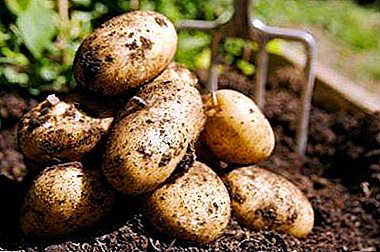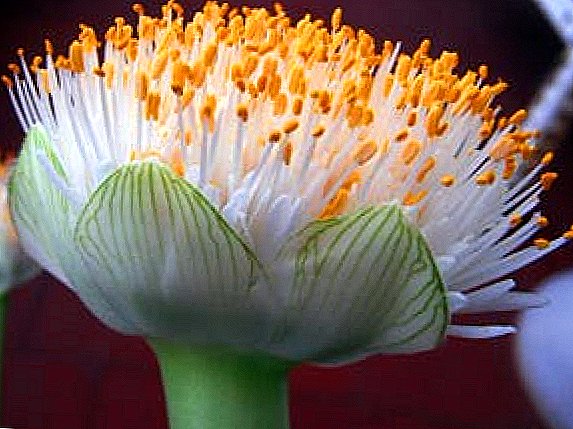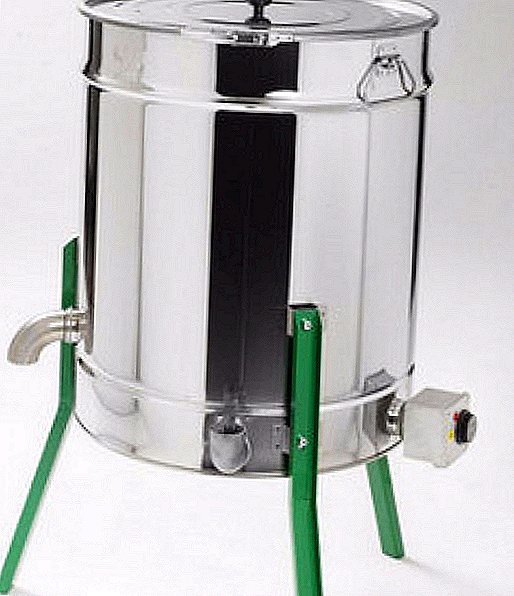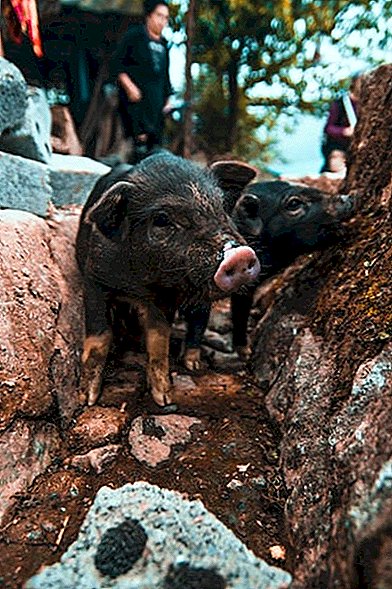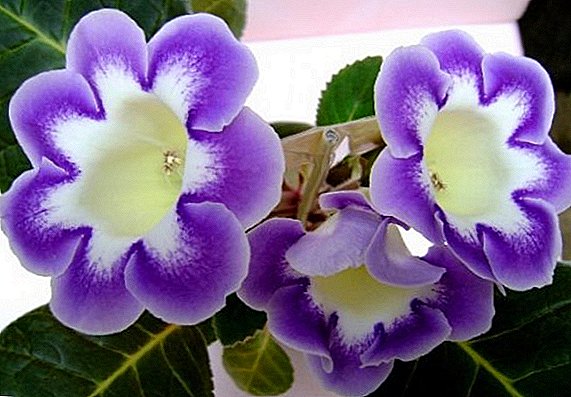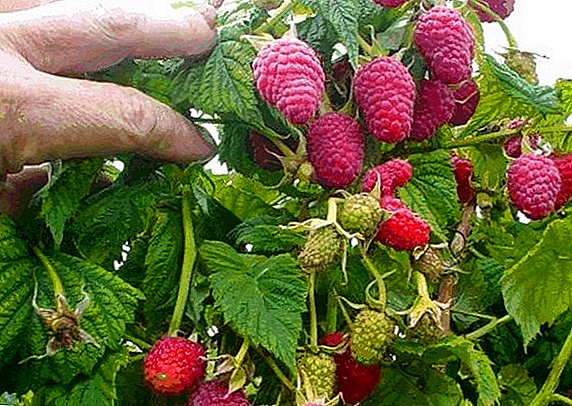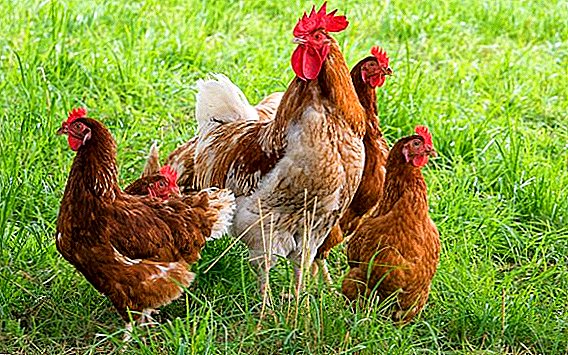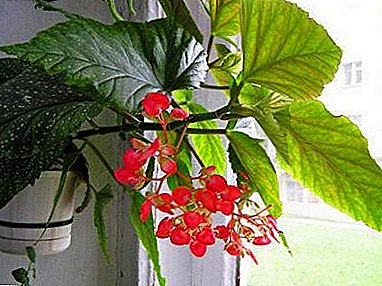
Probably, few lovers of the fruits of this wonderful southern beauty know that there are more than a few thousand varieties of sweet cherries in nature.
Moreover, every year this figure increases.
Therefore, you have every chance to choose exactly the sort of sweet cherry that will grow well in your region, taking into account all of its climatic and soil features.
The Leningrad black variety of cherries has proved itself very well, and we'll talk about it in this article.
Description of the Leningrad Black Cherry
Fruit
The fruits of Leningrad black are rather large, dark maroon, almost black, weighing about 5 grams. Heart shape. The taste of berries is sweet, with a slight noticeable bitterness. According to the tasting estimates, they rightly deserve 4.2 points.
Harvest ripens in mid-July, uneven, so it can hang on the cherry until mid-September, without losing its taste and appearance. The pulp of the berries is fibrous, very juicy, dark red and tender.
The fruits of this variety can boast a wide range of use - they make excellent juices, jams and compotes, as well as they can be used for long-term freezing and cooking wine.
It is also interesting to read about the most delicious varieties of cherry
Trees
Trees of the Leningrad Black variety belong to medium sweet cherries, their maximum height does not reach even 4 meters. Have a thin, wide, sprawling leafy cap. With very good care and favorable conditions of fruiting - the first harvest can be gathered already in the 3rd year after planting.
Sometimes they start to bear fruit only in the 5th year of growth. Crops differ in abundance and long period of storage on a tree.

In the early years after planting, the cherries will surprise you with their rapid growth. But this is not always good, as it is necessary to have time to correctly form its crown. Pruning young shoots should be carried out annually in early spring, always before the buds swell.
This event will slow down the intense growth a bit and allow you to create the shape of a tree as you planned. Trimming scheme sweet cherries are pretty simple. Shoots on annual seedlings pruned on 1 / 5th part of the twigs. It is mandatory to remove shoots growing in the direction of the trunk or at right angles. Twigs, creating excessive thickness of the crown.
Upon reaching 5 years of sweet cherry, the need for such pruning is no longer necessary, since this tree is not distinguished by excessive crown density. Only sanitary pruning of old and diseased branches remains.
Insofar as bark cherries are soft and brittle, the level of inclination of the twigs must be kept within 45-50 degrees by tying if necessary. This will reduce the risk of breakage of the branches, which often leads to damage to a large section of the trunk, and, consequently, to disease, and sometimes the death of a tree due to increased penetration.
In the fall, you should not prune the shoots, since this event will contribute to their intensive growth and, as a result, will reduce the hardiness of the tree.

Advantages and disadvantages
Merits This variety is set. It is very beneficial for commercial purposes, as the trees early in fruiting and immediately give a great harvest. It is worth paying attention to the uneven ripening of fruits - in large gardens, when there is no possibility to immediately sell all the products - this is an indisputable advantage for the owner.
For a small garden, this can be a significant disadvantage.
These cherries have a low growth, which greatly simplifies the collection of berries, quite cold-resistant and not afraid of drought. In addition, the Leningrad Black has a high level of resistance to various pests and diseases, which undoubtedly facilitates the care of it.
All of the above advantages significantly expand the ring of regions where this variety can be planted, from the warm climate of the Crimea to the Leningrad and Moscow regions.
Planting cherry trees
When landing worth paying attention to the depth of groundwater, because the cherry is a tree that does not tolerate stagnant water in the soil, even for a short time. Thermophilous enough, can not develop favorably in the lowlands, where, perhaps, the accumulation of cold air in the spring.
The root system is very well developed, so the turtle can extract moisture from the deep layers of the soil.
Leningradskaya black variety trees grow favorably on light, fertile soils, medium-loamy with a neutral environment and excellent breathability. Very poorly adapted on heavy peat soils, rocks with a high content of clay and deep sandstones.
The tree is light-loving enough, so when choosing a place for a seedling it is necessary to take care that no buildings block the light access to it.

Vegetation period maybe more than 8 months, which is why it is recommended to plant saplings of cherries in the beginning of spring, thereby providing her time for rooting and adaptation before the onset of cold weather. It’s necessary to prepare a place for your tree in autumn.
To do this, dig a hole 60cm deep and 80cm wide, loosen the bottom of the pit and pour up to 2 buckets of humus into it, which should be mixed with a small amount of soil. In this state, leave a hole to winter. In early spring, add the following mixture: 0.5 kg of superphosphates + about 100 g of sodium sulfate, the latter can be replaced with wood ash. The resulting dressing mix with humus at the bottom of the planting pit. The pit itself is ready.
Sweet cherry is sensitive to excessively dry or moist air. With a very hot spring flowering period is significantly shortened, which affects negatively the level of yield. With humid air, the appearance of rot and mold on fruits, as well as their cracking, is possible.
Now you need to pay attention to the roots of the seedling. In the event that they have dried up a little, it is necessary to cut them slightly and leave them in water for up to 10 hours to update. When the seedling is installed in a hole, it is necessary to make sure that the root neck of the tree rises above the soil level by no less than 5 cm.
Otherwise, with further shrinkage, it may be underground, which will inevitably lead to the death of the tree.
The tree is planted, we make a hole around it and watering 1 with a bucket of water to soak the ground well, after making a mulch of peat or humus around the seedling. The distance between sweet cherry must be at least 3m, since these trees have a very powerful deciduous crown.
This cherry belongs to the self-pollinating varieties, so if you decide to create a cherry orchard, you need to ensure that pollinating varieties such as Dawn, Red Dense, Bryanochka, Tyutchevka and Leningradskaya yellow or pink are present on the site. Cherry trees can also become a good pollinator, provided that their flowering period coincides with the cherry flowering period.
Cherry care
Watering
The beauty and fruitfulness of your garden depend not only on the composition of the soil and the climatic conditions of the planting region. The important role is played by how much you are willing to devote time and knowledge to care for your trees.
Since sweet cherry is a rather moisture-loving tree, which gives a rich harvest, timely watering is very important for it. Experienced gardeners recommend holding first watering after winter it is in early spring, until flowering. If the cherry has already become a snow-white beauty - it is not recommended to water the tree, otherwise it may reset the ovary.
Summer cherries are watered as the soil dries. To do this, take a sample of the soil from a depth of at least 40 cm and squeeze in the palm of your hand. If a lump of earth crumbles, it means that your cherry needs additional watering. With favorable soil moisture, the lump will not crumble or stick to hands, it will be elastic and keep its shape well.

Water temperature for irrigation preferably within 25 degrees. To slow down the sap flow and prepare the tree for the winter, the last watering is done during the autumn digging of the near-stem circle and fertilizer of the soil. This watering is very important for the tree, the volume of water is recommended about 100 liters per adult tree. After that, it is necessary to mix the okolostvolny circle well in order to reduce moisture loss.
Fertilizer
Cherries do not like excessive amounts of fertilizer, because then the intensive growth of shoots begins, which do not have time to mature for the winter and die from the first frost. The best thing to use organic fertilizers on a par with mineral in certain doses, this will allow to saturate the soil with all the missing beneficial substances and will not harm the plant.
In September, phosphorus dressings in the amount of 40-60 g of superphosphate in granules per 1 square meter are preferable. m. square projection of deciduous crown. This will help the tree to more easily survive the frost and increase the sugar content in the berries by 25%.
Once in 3 years, the earth in the circumference of the cherries digs up with the addition of 8kg organics (rotted manure or fermented chicken manure). The use of fresh organic fertilizer is unacceptable. They will decompose for too long and, as a result, will not fulfill their purpose in time. In addition, fresh organic matter can cause a burn of the root system, which will destroy the tree.
In order for the tree to prepare for winter, fertilizers with a nitrogen content are applied no later than the end of spring. It is best to use them in liquid form - it can be ammonium nitrate or ammonium sulphate.

Very sweet cherry to green fertilizer. They usually consist of mustard, pea, lupine, phacelia and sainfoin, which are planted in early summer. In the fall, these grasses are mown and the resulting mixture is introduced into the tree trunk circle. It is advisable to finish all works on feeding cherries before the end of spring, and digging with fertilizers of the near-stem circle — no later than September, to slow down sap flow and give the tree time to prepare for the winter cold.
Winter and summer care
Despite the fact that the cherry is a southern beauty, it tolerates frost well in winter, but, nevertheless, spring frosts with a temperature of - 2, only appearing buds can not withstand. The root system of the first November frosts is also very difficult, as there are still no snow drifts that can warm it.
Experienced gardeners shorten the cherry shoots during the annual trimming of a tree to increase frost tolerance. As a result, the leaf plates become larger and plastic elements accumulate better in them, which significantly increases the frost resistance of fruit buds. If the frost overtook the ovary or flowers, then, most likely, the death of the crop, because they can not withstand the temperature drop to even -1.

No less winter frosts are terrible and sweet sunburnthat occur due to large temperature drops after sunset. As a result, cracks appear on your tree and wounds form on the bark, which contribute to the drying of the branches and, in large quantities, the death of the tree.
To prevent sunburn is necessary whitewash the trunk and branches wood lime mortar. For very young seedlings in whitewashing lime is replaced with chalk, so as not to damage the young bark. This whitewash acts as a mirror and reflects the sun's rays. It is necessary to pay attention to the consistency of the solution.
Its viscosity should resemble the thickness of sour cream to cover the tree well and evenly. Some types of solutions perform the function of not only protecting the tree, but also its feeding, such as, for example, a mixture of lime with mullein or a mixture of clay with ashes and mullein. All components whitewash thoroughly mixed with the addition of water and applied with a brush on the trunk and skeletal branches of the tree.
In addition, it is desirable cherries wrapping insulating "fur coats" that will not only protect the tree from burns and frost, but also prevent damage to the bark by small and large rodents. As materials for the "coat" you can use roofing paper, paper, old rags and pine, as well as spruce branches, which are tied to the stem of a tree. It is absolutely impossible to use straw as it attracts rodents, who prefer to live in it.
Pests and diseases
Here we come to the main problem for the care of cherries. These are pests and diseases of the tree. Biggest curse for this beauty are birds, it's not for nothing that our ancestors nicknamed this tree "bird cherry". Birds are capable of destroying most of the crop within 1 hour, especially if the tree is quite tall and it is not possible to remove the upper fruits quickly.
For several hundred years, gardeners have come up with means of protection against winged misfortune - these are stuffed animals, various shiny reflective elements, and rattles that create a constant noise. But all this tinsel did not provide a lasting effect.

Most of all, the use of nets for sheltering the tree crown has proven itself. They are quite light and easy to use, in addition, provide real protection for almost the entire crop. Sweet cherry Leningrad black is very resistant to pests and diseases. But if you happen to notice something on the trunk, I can easily get rid of it by treating the tree with insecticides and folk remedies.
Excessively wet from fog or large amounts of precipitation air contributes to the development fungal diseases. These include moniliosis and coccomycosis. The first is characterized by early abscission of foliage, drying of flowers and twigs, wrinkling and drying of berries.
The second - extends to a greater extent on the leaves, which, in case of infection, become covered with small red spots, which over time increase and merge with each other. To heal the tree from fungal diseases will help irrigation with fungicides and, of course, the removal and complete destruction of diseased branches, foliage and fruits.
Sweet cherry Leningrad black is a wonderful choice for your garden. However, one should not forget that large berries and healthy trees are not only the main characteristics of the considered variety, but also the fruits of the diligent and attentive work of a loving gardener.


